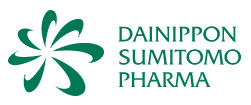预约演示
更新于:2025-05-16
Ebastine
依巴斯汀
更新于:2025-05-16
概要
基本信息
原研机构 |
权益机构- |
最高研发阶段批准上市 |
最高研发阶段(中国)批准上市 |
特殊审评- |
登录后查看时间轴
结构/序列
分子式C32H39NO2 |
InChIKeyMJJALKDDGIKVBE-UHFFFAOYSA-N |
CAS号90729-43-4 |
关联
26
项与 依巴斯汀 相关的临床试验ITMCTR2024000752
Translation: A clinical evaluation study on the combination of traditional Chinese medicine external treatment method, Du Mai moxibustion, and western drug ebastine in treating chronic urticaria.
开始日期2024-11-30 |
申办/合作机构 |
NCT06480110
Ebastine in Combination With Docetaxel as a Treatment for Castration-resistant Metastatic Prostate Cancer
This is an open-label phase I/II study evaluating the addition of ebastine to docetaxel in the treatment for metastatic castration resistant prostate cancer.
Patients will be randomized in a 2:1 fashion to receive ebastine daily during and after treatment with a maximum of 10 courses of docetaxel.
The primary endpoint is change in the profile of urinary and blood lipids to indicate absorption and possible efficacy of ebastine.
Secondary endpoints include PSA response and radiologic progression free survival.
Patients will be randomized in a 2:1 fashion to receive ebastine daily during and after treatment with a maximum of 10 courses of docetaxel.
The primary endpoint is change in the profile of urinary and blood lipids to indicate absorption and possible efficacy of ebastine.
Secondary endpoints include PSA response and radiologic progression free survival.
开始日期2024-06-20 |
申办/合作机构  Rigshospitalet Rigshospitalet [+1] |
CTR20234125
依巴斯汀片人体生物等效性研究
采用单中心、随机、开放、两周期、单剂量、空腹及餐后给药设计,比较北京四环科宝制药股份有限公司提供的依巴斯汀片(规格:10 mg)与ALMIRALL,S.A.持证的原研进口药品依巴斯汀片(商品名:开思亭®/Kestine®,规格:10 mg)在健康人群中吸收程度和速度的差异。
开始日期2024-01-13 |
申办/合作机构 |
100 项与 依巴斯汀 相关的临床结果
登录后查看更多信息
100 项与 依巴斯汀 相关的转化医学
登录后查看更多信息
100 项与 依巴斯汀 相关的专利(医药)
登录后查看更多信息
731
项与 依巴斯汀 相关的文献(医药)2025-05-01·SEMINARS IN DIALYSIS
Two Cases of Acquired Reactive Perforating Collagenosis in Hemodialysis Patients
Article
作者: Shi, Shumei ; Cao, Fale ; Xu, Min
ABSTRACT:
Acquired reactive proliferating collagen (ARPC), usually associated with systemic diseases, is a rare skin disease characterized by the elimination of altered dermal collagen through the epidermis. Here, we report two cases of ARPC in maintenance hemodialysis patients, one of which is combined with type 2 diabetes, chronic renal failure, and hypertension and the other is combined with chronic renal failure and hypothyroidism. Two patients were treated with oral thalidomide and ebastine, local application of fluticasone propionate cream, and enhanced dialysis. After treatment, the itching and the rash significantly improved. We report for the first time that ARPC in patients with hemodialysis could be improved by oral thalidomide and antihistamines and local application of steroid. This report provides reference for guiding the understanding of ARPC and the new treatment of ARPC in hemodialysis patients.
2025-03-01·JOURNAL OF PHYTOPATHOLOGY
Screening of Potential Endophytes Against Fungal Pathogens, Curvularia lunata, Bipolaris oryzae and Pyricularia setariae Using In Vitro and Computational Approaches
作者: Muttappagol, Mantesh ; Kumar, T. L. Mohan ; Shankarappa, K. S. ; Nandan, M. ; Lakshminarayana Reddy, C. N. ; Bharath, M. ; Ashwini, J. H. ; Basha, C. R. Jahir ; Hiremath, Shridhar
ABSTRACT:
Curvularia lunata, Bipolaris oryzae and Pyricularia setariae are a group of dematiaceous fungi which pose significant challenges in agriculture. Extensive use of synthetic fungicides to control them has led to cross‐kingdom transfer and the development of fungicide resistance. Hence, endophytes and their metabolites can be used as an eco‐friendly option to mitigate them. Potential endophytes (Macrophomina phaseolina, Macrophomina pseudophaseolina, Trichoderma asperellum and Polyporales sp.) were tested for their bio‐control efficacy through in vitro dual culture and double Petri dish assay. In the dual culture assay, all five endophytes exhibited significantly higher antagonistic activity against C. lunata than other plant pathogens. However, in the double Petri dish assay, which tested the efficacy of volatile organic compounds (VOCs) produced by endophytes for in vitro pathogen control, the growth of P. setariae was notably more inhibited than that of the other pathogens. Further, the individual metabolites produced by the fungal endophytes were characterised by LC–MS/MS and used for in silico docking analysis against specific target proteins: Polyketide synthase (PKS), beta‐tubulin and trihydroxynapthalene reductase (THR) of the fungal pathogens. The docking analysis revealed that 3‐beta‐chloro‐Imperialine, quinoline‐6,8‐disulfonic acid and bucladesine from CSR1 (Macrophomina pseudophaseolina) demonstrated superior binding affinities to β‐tubulin of C. lunata, with dock scores of −7.45, −7.3 and −7.24 kcal/mol respectively, outperforming the commercially available fungicide carbendazim (−5.95 kcal/mol). Two metabolites, veratrosine and glimepiride present in Polyporales sp., interacted with THR with binding affinities of −12.4 and −10.76 kcal/mol. In interactions with PKS of B. oryzae, 3‐methylcholanthrene and penitrem A from TPS2 (Trichoderma asperellum) showed outstanding dock scores of −11.22 and −10.08 kcal/mol, respectively. These findings highlight the potential of endophyte‐derived metabolites as powerful inhibitors of fungal pathogens, offering promising leads for developing novel antifungal treatments.
2025-02-01·JOURNAL OF DRUG DELIVERY SCIENCE AND TECHNOLOGY
Hydrotropy and co-crystallization for synergistic enhancement of dissolution rate and in vivo anti-inflammatory efficacy of ebastine
作者: Sultan, Amal A. ; Eltobshi, Amal A. ; El Maghraby, Gamal M.
Despite the potent anti-allergic action of ebastine, its hydrophobicity results in erratic dissolution and low oral bioavailability.The aim was to explore co-processing with caffeine to enhance dissolution rate and in vivo efficacy of ebastine.Ebastine was subjected to ethanol assisted kneading with rising ratios of caffeine.The developed dry mixtures were characterized using Fourier transform IR (FTIR), X-ray powder diffraction (XRPD), differential scanning calorimetry (DSC), and dissolution testing.The in vivo anti-inflammatory activity was investigated against carrageenan-induced rat paw edema.Characterization confirmed development of co-crystalline species at 1:2 molar ratio of ebastine: caffeine.Higher dissolution was evident at 1:3 molar ratio specifying an addnl. solubilizing effect of caffeine due to hydrotropy.In vivo investigations revealed intensified activity of ebastine/caffeine co-crystals compared to the un-processed ebastine.This was manifested by improved erythematous edema associated with a significant reduction in area under edema formation curve.Histopathol. examination of thick and thin skin samples of the examined animal groups confirmed the in vivo superiority of ebastine co-crystals with the recorded inflammation score being comparable to the un-inflamed normal rats' group.The study introduced caffeine as a coacting hydrotrope and co-crystal co-former for enhancement of the dissolution rate and oral pharmacol. activities of ebastine.
68
项与 依巴斯汀 相关的新闻(医药)2025-05-08
DRUGAI今天为大家介绍的是来自德国慕尼黑大学Christian L. Müller率领的团队发表的一篇论文。抗生素耐药性正在全球范围内日益严重,这使得常见抗生素的效力不断下降。通过实验方法测试新化学化合物的抗菌活性不仅耗时,而且成本高昂。尽管以化合物为中心的深度学习模型有望加速这一筛选过程,但现有方法通常需要大量专门的训练数据。本研究提出了一种轻量级计算策略用于抗菌素发现,该策略基于MolE(Molecular representation through redundancy reduced Embedding)。MolE是一种自我学习的深度学习框架,它能够利用未标记的化学结构数据自动学习分子的通用特征表示。作者将MolE的表示学习能力与已有的实验验证数据相结合,开发出一个通用预测模型,可以评估化合物的抗菌潜力。作者的模型成功识别了近期发现的生长抑制化合物,这些化合物在结构上与现有抗生素有明显区别。更重要的是,通过这一方法,作者发现并实验证实了三种原本用于人类治疗的药物可以有效抑制金黄色葡萄球菌的生长。这一研究框架为加速抗生素发现提供了一种可行且经济高效的策略,有望帮助解决日益严峻的抗生素耐药性挑战。面对日益严重的抗生素耐药性问题,开发新型抗生素已成为当务之急。传统上,科研人员通过筛选大型化学库来寻找潜在的抗生素候选物,但这种方法成功率仅有1-3%,且耗费大量人力物力。更令人担忧的是,现有化学库中分子多样性有限,难以验证新发现或新合成的化学物质。在这一背景下,研究团队开发了一种创新的深度学习辅助策略,可以大幅提高筛选效率。这一方法采用两阶段深度学习架构(如图1所示):图 1第一阶段使用名为MolE的自监督学习框架(分子冗余减少嵌入表示法)进行分子特征提取。MolE能够从PubChem数据库中大量未标记的化学结构中学习通用的分子表示。第二阶段利用MolE学到的分子表示,结合公开可获取的FDA批准药物对多种细菌的抑制效果数据,计算出一系列抗菌潜力(AP)评分,用于化合物筛选优先级排序。与以往需要大量特定任务训练数据的方法不同,MolE采用图同构网络(GINs)进行表示学习,并创新性地将Barlow-Twins非对比学习框架应用到分子领域。这使得该方法能够在多种分子性质预测任务上取得竞争性能。研究证明,MolE计算的抗菌潜力评分能够准确反映不同结构化合物(如Halicin和Abaucin)的广谱和窄谱抗菌活性。在一个包含2000多种化合物的库中,研究团队成功识别出约200种具有高抗菌潜力评分的化合物。更令人鼓舞的是,团队从预测的高抗菌潜力但无已知抗菌活性的分子中,优先选择了六种进行实验验证,结果证实其中三种对人类病原体金黄色葡萄球菌具有显著抑制作用,成功率远高于行业平均水平。这一研究为微生物学家提供了一种通用且经济高效的方法,用于优先筛选和发现具有抗生素特性的新分子,有望加速新型抗生素的开发进程,应对全球抗生素耐药性危机。MolE:一种智能分子表示学习方法开发新型抗生素的关键前提是能够高效、通用地表示分子结构。研究团队开发的MolE(分子冗余减少嵌入表示法)框架正是为此而设计。这一创新方法采用自我学习机制,无需人工标注数据,就能自动理解分子的结构特征。MolE的工作原理类似于人类学习识别物体:通过反复观察不同角度的同一物体来理解其本质特征。具体来说,系统首先将分子的文本表示(SMILES)转换为图结构,其中原子作为节点,化学键作为边。然后,系统通过“遮盖”分子结构的部分内容,创建同一分子的两种变体,并学习识别它们代表相同分子的能力。这一过程使MolE能够专注于分子的本质特征,而非表面细节。图 2研究表明,MolE能够智能地识别分子的关键结构特征。如图2所示,具有相似功能基团或拓扑结构的分子在MolE的表示空间中被放置在一起。例如,含有萘基团连接长碳链的化合物、含有吡啶环的化合物、含有醚键的苯环化合物,以及含氮杂环化合物等都被分别聚类。特别值得注意的是,MolE甚至能够识别短氨基酸链的相似性,这些肽类分子在表示空间中形成了独特的聚类。与传统的分子指纹表示法(ECFP4)相比,MolE能够捕捉更多化学上有意义的特征。以雷克托胺(Ractopamine)为例,MolE识别出的最相似分子都共享两个酚基团和一个胺基团,而ECFP4只能识别一个酚环和一个甲基。这表明MolE能够更全面地理解分子的化学结构。在分子性质预测方面,MolE结合机器学习算法(如XGBoost)在多项任务中表现出色。在六项分类任务中,MolE在四项任务上取得最佳结果,平均性能提升3%。特别是在临床毒性预测(ClinTox)基准测试中,MolE达到了92.85%的准确率,甚至超过了一些需要数百万训练样本的大型模型。最令人印象深刻的是,MolE只需约10万个未标记分子结构就能学习到有意义的表示,计算资源需求远低于其他需要数百万样本的方法。这种高效性使MolE特别适合那些标记数据稀缺的任务,为抗生素发现提供了一种经济实用的计算工具。MOIE精准预测化合物抗菌活性图 3在MolE框架的第二阶段,研究团队将其强大的分子表示能力应用于抗菌药物筛选领域。如图3所示,他们利用一个包含1197种市售药物对40种人类肠道细菌影响的公开数据集,训练了名为MolE-XGBoost的预测模型。这一模型能够为任何化合物生成一个“抗菌活性指纹”——预测该化合物对40种不同细菌的抑制概率。这种预测能力有两个关键应用:一是判断化合物是否能抑制特定细菌的生长;二是评估化合物的抗菌谱范围——即它能抑制多少种不同的细菌。所谓“广谱”抗生素能够对抗多种细菌,而“窄谱”抗生素则只针对特定类型的细菌有效。与现有方法相比,MolE-XGBoost展现出明显优势。在精确度和召回率(两个衡量预测准确性的重要指标)方面,它大幅超越了传统的ECFP4指纹方法和其他使用化学描述符的模型。一个典型例子是对人类靶向药物Diacerein(洛芬待因)的预测——MolE-XGBoost正确识别了该药物在实验中显示的33种抑制效果中的25种,而基于ECFP4的模型完全未能发现其任何抗菌活性。更令人印象深刻的是,MolE-XGBoost能够“重新发现”近期突破性研究中发现的新型抗生素。它准确预测了Halicin(一种由人工智能发现的广谱抗生素)对大肠杆菌和艰难梭菌的抑制作用。对于Abaucin(一种窄谱抗菌药物),模型也正确识别了其高度特异性的活性模式。在对24种已知具有广谱抗菌活性的化合物的测试中,MolE-XGBoost展现出最高的预测准确率。而传统的ECFP4模型未能识别大多数人类靶向药物的抗菌活性,基于化学描述符的模型则倾向于过度预测,导致大量假阳性结果。特别值得一提的是,MolE-XGBoost成功识别了5种具有广谱活性的化合物,这些化合物是ECFP4模型完全忽略的。这些结果表明,MolE-XGBoost不仅能准确预测已知抗菌药物的活性,还能发现那些原本被开发用于其他治疗目的但具有潜在抗菌特性的药物。这种能力对于药物重新定位和新型抗生素发现具有重要意义,为应对日益严重的抗生素耐药性危机提供了新的希望。MOIE预测化学库中的抗菌潜力研究团队使用MolE-XGBoost模型预测了一个包含2,320种FDA批准药物、食品同源产品和人体内源代谢物的正交化学库中的抗菌潜力评分。他们设计了四种抗菌潜力(AP)评分变体来对个别化合物进行排序:(i)预测被抑制的菌株总数K;(ii)所有40个菌株估计概率的log2几何平均值G;(iii)所有22个革兰氏阳性菌株概率的log2几何平均值G+;(iv)所有18个革兰氏阴性菌株概率的log2几何平均值G-。图 4如图4a所示,在MolE基础的UMAP嵌入中,2320种化合物中有235种被预测为广谱抑制剂化合物。在这些化合物中,158种是非抗生素。文献回顾显示,这158种化合物中有53种先前已被报道抑制各种细菌物种的生长,如天然产物鞣花酸和紫杉酮,以及人类靶向药物氟尿嘧啶。这33%的命中率大大改善了大规模化学筛选常见的1-3%的命中率。研究团队进一步评估了所提出的AP评分的有效性,测试了它们对化学库中93种已知抗生素的排序能力。图4c显示了所有化合物的一般AP评分G与预测抑制菌株数量K的分布。观察到强大的排序能力,在大AP评分处抗生素化合物富集。此外,93种抗生素中有77种被预测抑制10种或更多菌株,证实两种评分方案对未见过的抗生素化合物都有很好的泛化能力。最后,研究团队通过同时对先前预测为广谱的158种非抗生素化合物进行排序,评估了针对革兰氏阳性和革兰氏阴性菌株的精细AP评分的区分潜力。与当前关于革兰氏阳性细菌对化学应激源敏感性的知识一致,大多数化合物对革兰氏阳性菌株的AP评分高于对革兰氏阴性菌株的评分。然而,观察到核苷酸类似物,如尿苷和尿苷衍生物,被预测对革兰氏阴性菌株更活跃,证实了最近的证据,即尿苷分子是氨基糖苷类抗生素对抗大肠杆菌的有力辅助剂。AI预测与实验验证为了验证MolE-XGBoost模型预测的可靠性,研究团队进一步探索了其抗菌潜力评分与实际实验数据之间的关系。他们通过广泛文献调研,收集了158种被预测具有广谱抗菌活性的非抗生素化合物的实验数据。在这些研究中,科学家们使用“最小抑菌浓度”(MIC)来衡量化合物的抗菌效力——这一指标表示能够抑制细菌生长所需的最低药物浓度,数值越低意味着抗菌效力越强。研究团队发现,31种化合物在实验中显示出较强的抗菌活性,其MIC值不超过128微克/毫升。图 5分析结果令人信服:如图5a所示,MolE-XGBoost预测的抗菌潜力评分与实验测定的最小抑菌浓度之间存在显著的负相关关系(相关系数为-0.5)。这意味着模型给予高评分的化合物,在实验中确实表现出更强的抗菌能力(需要更低的浓度就能抑制细菌生长)。这一关系对革兰氏阳性细菌(蓝色标记)和革兰氏阴性细菌(黄色标记)均成立。图5b进一步展示了抗菌效力最强和最弱的几种化合物,以及它们能抑制的细菌种类。值得注意的是,这些实验数据中包含了一些模型训练时从未见过的细菌种类,如肺炎链球菌、金黄色葡萄球菌和克雷伯菌等。模型对这些“陌生”细菌的准确预测,证明了其良好的泛化能力——能够应用于新的化合物和细菌组合。研究团队还发现,针对特定类型细菌的抗菌潜力评分(G+和G-)与相应细菌类型的最小抑菌浓度也存在类似的相关性。这进一步证实了评分系统的准确性和实用性。对比之下,当使用传统的ECFP4分子表示方法时,预测评分与实际抗菌效力之间没有显著关联。此外,ECFP4方法识别的高评分化合物中,能在实验中证实有效(MIC ≤128μg/mL)的数量也明显少于MolE-XGBoost方法。化合物生成验证研究团队在MolE-XGBoost AP评分的指导下,从发现库中选择了六种化合物进行实验验证:Cetrorelix、Ebastine、Elvitegravir、Opicapone、Thymidine和Visomitin。选择这些化合物的标准是:(i)预测为广谱(K≥10);(ii)AP评分G+ > −10和G− > −10;(iii)覆盖各种功能和化学结构;(iv)商业可获得。重要的是,所选化合物在结构上都与训练集中的抗生素不同(Tanimoto相似性≤0.3)。除Visomitin外,这些化合物此前未被报道抑制细菌或真菌菌株的生长。图 6如图6所示,六种测试化合物中有三种被证实对革兰氏阳性病原体金黄色葡萄球菌的生长有可测量的影响。最强的效果观察到的是Elvitegravir,它在8μg/mL的浓度下抑制了金黄色葡萄球菌的生长。此外,Opicapone在128μg/mL的浓度下显著限制了金黄色葡萄球菌的生长,最大光密度为0.38±0.01。在较低的16μg/mL浓度下,它延长了滞后期的持续时间和种群倍增时间约1小时。最后,Ebastine将金黄色葡萄球菌的滞后期延长了约2小时。值得注意的是,实验重新发现了Visomitin的广谱活性,表明它可以在64μg/mL的浓度下抑制铜绿假单胞菌和肺炎克雷伯菌的生长,从而扩大了已知对这种化合物敏感的物种列表。虽然研究团队没有观察到对Cetrorelix和Thymidine的生长抑制反应,但它们预测的抗菌潜力可以通过训练集中存在的影响细菌生长的类似分子来解释,如叠氮胸苷。这种药物是Thymidine的化学类似物,先前已被证明抑制十二种菌株(九种革兰氏阴性和三种革兰氏阳性)的生长。因此,模型预测Thymidine对革兰氏阴性菌株特别有效。讨论面对抗菌药物发现中的数据稀缺问题,MolE框架创新性地利用大量未标记分子结构进行深度学习,捕捉关键化学特征,显著提升了分子性质预测的准确性。基于MolE的预训练表示,作者的XGBoost模型能准确评估化合物的抗菌潜力,成功重新发现了如Halicin等新型抗生素,并识别了传统方法容易忽略的广谱抗菌物质。作者设计的抗菌潜力评分系统可靠地预测了化合物对不同细菌的抑制能力,在实验验证中取得了显著成果——六种测试化合物中有三种对金黄色葡萄球菌显示出明显抑制效果。这些化合物结构上与已知抗生素截然不同,证明了系统发现创新抗菌物质的能力。随着耐药性威胁不断增加,这种计算引导的药物发现方法为加速新型抗生素研发提供了高效途径。编译|于洲审稿|王梓旭参考资料Olayo-Alarcon R, Amstalden M K, Zannoni A, et al. Pre-trained molecular representations enable antimicrobial discovery[J]. Nature Communications, 2025, 16(1): 3420.
2025-05-07
·米内网
精彩内容今年以来,葫芦娃药业产品研发进展不断:5个品种获批生产并视同过评,2个品种通过一致性评价,3个品种有望于6月底前获批生产或过评,多个报产品种步入或即将步入发补阶段;申报方面,3个品种以新注册分类报产,中药新药提交IND,3个仿制药、1款2类改良型新药有望于6月底前申报上市。此外,还有多个研发项目正在加速推进中。拿下5个重磅品种!大批新品上市在即葫芦娃药业聚焦儿童药领域,近年来积极布局具有潜力及特色的品种,新品获批迎来爆发期。2024年,葫芦娃药业有13个品种获批生产并视同过评,2个品种顺利通过一致性评价;2025年至今,公司已有5个品种获批生产并视同过评,2个品种顺利通过一致性评价。今年以来葫芦娃药业获批上市/过评的品种截至目前,葫芦娃药业有30个品种过评或视同过评,涵盖7个治疗大类,集中在全身用抗感染药物(9个品种)、呼吸系统用药(7个品种)、消化系统及代谢药(5个品种)等领域。在葫芦娃药业已报产或提交一致性评价补充申请在审的品种中,头孢丙烯干混悬剂、依巴斯汀口服溶液有望于今年6月底前获批生产并视同过评,均为口服液体剂。该剂型具有服用便捷、吸收快、口感好等优势,适合儿童、老年人等特殊人群使用,目前葫芦娃药业已有7款口服液体剂(化学药)获批。米内网数据显示,2024年中国三大终端六大市场(统计范围详见本文末)口服液体剂(化学药)销售额超过410亿元。有望于6月底前获批上市/过评的品种此外,今年以来,葫芦娃药业有5个以新注册分类报产、2个提交一致性评价补充申请的品种已步入发补阶段,距离正式获批更近了一步。其中,磷酸奥司他韦干混悬剂、头孢丙烯干混悬剂均为口服液体剂,吸入用复方异丙托溴铵溶液有望成为公司第四款获批的吸入剂。已进入发补阶段的品种6个以新注册分类报产的品种有望于今年6月底前进入发补阶段,包括氨溴特罗口服溶液、乳果糖口服溶液、盐酸氨溴索滴剂、蒙脱石混悬液、硫酸镁钠钾口服用浓溶液5款口服液体剂,以及盐酸奥普力农注射液1款注射剂。其中,乳果糖口服溶液2024年在中国三大终端六大市场的销售额超过22亿元。有望在6月底前进入发补阶段的品种中药新药、改良型新药、高端制剂......多个研发项目火速推进葫芦娃药业坚持仿创结合,积极开发吸入剂、口溶膜、缓释控释制剂等技术壁垒高、市场前景广的新剂型产品。今年以来,葫芦娃药业有3个品种以新注册分类报产,其中枸橼酸西地那非口溶膜有望成为公司首款口溶膜制剂,该产品在国内暂无企业拥有生产批文;美阿沙坦钾片是一款具有市场潜力的高血压用药,2024年在中国三大终端六大市场的销售额增速约达194%,目前获批上市的国内企业仅有3家。今年以来葫芦娃药业申报上市/临床的品种此外,艾地骨化醇软胶囊、硫酸氨基葡萄糖胶囊、复方聚乙二醇电解质散(儿童型)3个仿制药以及2.2类改良型新药LPC-011口溶膜有望于今年6月底前申报上市。其中,艾地骨化醇软胶囊2024年在中国三大终端六大市场的销售额增速超过400%;LPC-011口溶膜为布瑞哌唑改良剂型,目前国内已获批上市的布瑞哌唑制剂仅有大冢制药的布瑞哌唑片。有望于6月底前申报上市的品种此外,葫芦娃药业部分在研项目也在加速推进中:盐酸溴己新雾化吸入溶液III期临床试验预计第三季度完成总结报告,目前国内暂无企业拥有该产品生产批文;布瑞哌唑口溶膜(LPC-011)预计将于第二季度完成临床试验总结报告并申报NDA;头孢泊肟酯干混悬剂、瑞舒伐他汀依折麦布片等已于第一季度完成BE试验。资料来源:米内网数据库、公司资料等注:米内网《中国三大终端六大市场药品竞争格局》,统计范围是:城市公立医院和县级公立医院、城市社区中心和乡镇卫生院、城市实体药店和网上药店,不含民营医院、私人诊所、村卫生室,不含县乡村药店;上述销售额以产品在终端的平均零售价计算。数据统计截至5月6日,如有疏漏,欢迎指正!免责声明:本文仅作医药信息传播分享,并不构成投资或决策建议。本文为原创稿件,转载文章或引用数据请注明来源和作者,否则将追究侵权责任。投稿及报料请发邮件到872470254@qq.com稿件要求详询米内微信首页菜单栏商务及内容合作可联系QQ:412539092【分享、点赞、在看】点一点不失联哦
一致性评价上市批准
2025-04-13
·信狐药迅
每周药品注册获批数据,分门别类呈现,一目了然。(4.7-4.13)新药上市申请药品名称企业注册分类受理号SHR0302片江苏恒瑞医药股份有限公司1CXHS2300097夫那奇珠单抗注射液苏州盛迪亚生物医药有限公司1CXSS2400018夫那奇珠单抗注射液苏州盛迪亚生物医药有限公司1CXSS2400017新药临床申请药品名称企业注册分类受理号注射用BH259珠海贝海生物技术有限公司1CXHL2500168HRS9531注射液福建盛迪医药有限公司1CXHL2500157HRS9531注射液福建盛迪医药有限公司1CXHL2500156HRS9531注射液福建盛迪医药有限公司1CXHL2500155HRS-9813胶囊广东恒瑞医药有限公司1CXHL2500147TM471-1胶囊知微生物医药(新乡)有限公司1CXHL2500137TM471-1胶囊知微生物医药(新乡)有限公司1CXHL2500136AC699片冰洲石生物科技(上海)有限公司1CXHL2500145AC699片冰洲石生物科技(上海)有限公司1CXHL2500142TQB3019胶囊正大天晴药业集团股份有限公司1CXHL2500138TT-9701片中国科学院上海药物研究所1CXHL2500129TT-9701片中国科学院上海药物研究所1CXHL2500128INR102注射液云核医药(天津)有限公司1CXHL2500121FY101注射液北京福元医药股份有限公司1CXHL2500100DNV001注射液杭州鼎乐新为生物科技有限公司1CXHL2500095奥格特韦钠胶囊浙江艾森药业有限公司1CXHL2500093SYH2046片上海翊石医药科技有限公司1CXHL2500091SYH2046片上海翊石医药科技有限公司1CXHL2500090RN1871 注射液大睿生物医药科技(上海)有限公司1CXHL2500078注射用IMBZ18g广州艾奇西新药研究有限公司1CXHL2500053DM2065贴北京德默高科医药技术有限公司2.2CXHL2500148司美格鲁肽注射液海南中和药业股份有限公司2.2CXHL2500127司美格鲁肽注射液海南中和药业股份有限公司2.2CXHL2500126司美格鲁肽注射液海南中和药业股份有限公司2.2CXHL2500125司美格鲁肽注射液海南中和药业股份有限公司2.2CXHL2500124LH-2103胶囊江苏联环药业股份有限公司2.3CXHL2500114注射用西罗莫司(白蛋白结合型)石药集团中奇制药技术(石家庄)有限公司2.4CXHL2500134带状疱疹mRNA疫苗上海生物制品研究所有限责任公司1.2CXSL2500040AK139注射液中山康方生物医药有限公司1CXSL2500100AK139注射液中山康方生物医药有限公司1CXSL2500099BNT327百欧恩泰(上海)医药有限公司1CXSL2500096BNT326百欧恩泰(上海)医药有限公司1CXSL2500095注射用SIM0686上海先祥医药科技有限公司1CXSL2500097注射用QLS31905齐鲁制药有限公司1CXSL2500084ADG126注射液天演药业(苏州)有限公司1CXSL2500089注射用ZG005苏州泽璟生物制药股份有限公司1CXSL2500083注射用ASKG915江苏奥赛康生物医药有限公司1CXSL2500092SHR-1819注射液广东恒瑞医药有限公司1CXSL2500086SHR-4658注射液上海恒瑞医药有限公司1CXSL2500067EA5注射液上海览屹医药科技有限公司1CXSL2500051P134细胞注射液天士力医药集团股份有限公司1CXSL2500032XS411细胞注射液士泽生物医药(苏州)有限公司1CXSL2500035卡度尼利单抗注射液康方药业有限公司2.2CXSL2500102QL2107注射液齐鲁制药有限公司2.2CXSL2500085SHR-8068注射液苏州盛迪亚生物医药有限公司2.2CXSL2500088阿得贝利单抗注射液上海盛迪医药有限公司2.2CXSL2500093阿得贝利单抗注射液上海盛迪医药有限公司2.2CXSL2500081纳基奥仑赛注射液广东合源生物医药有限公司2.2CXSL2500030仿制药申请药品名称企业注册分类受理号法莫替丁注射液广州一品红制药有限公司3CYHS2401785盐酸纳美芬注射液福建新迪医药科技有限公司3CYHS2401361帕拉米韦注射液山东齐都药业有限公司3CYHS2400400氯化钾注射液福建新迪医药科技有限公司3CYHS2303635盐酸阿比多尔片武汉人福利康药业有限公司3CYHS2303169普瑞巴林口服溶液浙江浙北药业有限公司3CYHS2302826钠钾镁钙注射用浓溶液南京正科医药股份有限公司3CYHS2302809普瑞巴林口服溶液广西维威制药有限公司3CYHS2302626磷酸奥司他韦干混悬剂江苏加友药业集团有限公司3CYHS2302613生理氯化钠溶液山东科伦药业有限公司3CYHS2302543生理氯化钠溶液山东科伦药业有限公司3CYHS2302542福多司坦口服溶液昆明南疆制药有限公司3CYHS2302476复方匹可硫酸钠颗粒江西科睿药业有限公司3CYHS2302428氨茶碱注射液华夏生生药业(北京)有限公司3CYHS2302129昂丹司琼口溶膜江苏和晨药业有限公司3CYHS2302092昂丹司琼口溶膜江苏和晨药业有限公司3CYHS2302091依巴斯汀口服溶液海南元盈医药科技有限公司3CYHS2302066熊去氧胆酸口服混悬液成都赛璟生物医药科技有限公司3CYHS2302006洛索洛芬钠口服溶液云南先施药业有限公司3CYHS2301966氢溴酸依他佐辛注射液合肥亿帆生物制药有限公司3CYHS2301841复方聚乙二醇(3350)电解质散南京同仁堂黄山精制药业有限公司3CYHS2301730奥硝唑注射液海南海灵化学制药有限公司3CYHS2301608注射用苯唑西林钠广东金城金素制药有限公司3CYHS2301449注射用苯唑西林钠广东金城金素制药有限公司3CYHS2301448米诺地尔外用溶液江苏润邦药业有限公司3CYHS2301430米诺地尔外用溶液江苏润邦药业有限公司3CYHS2301429右酮洛芬氨丁三醇片湖南诺纳医药科技有限公司3CYHS2301107盐酸左西替利嗪口服溶液吉林省辉南长龙生化药业股份有限公司3CYHS2300981聚乙烯醇滴眼液浙江莎普爱思药业股份有限公司3CYHS2300976维生素K滴剂广西铭磊维生制药有限公司3CYHS2201025国;CYHS2201025复方氨基酸注射液(18AA-IX)辽宁民康制药有限公司4CYHS2500159沙美特罗替卡松吸入粉雾剂润生药业有限公司4CYHS2403268硫酸氢氯吡格雷片四川鲁徽制药有限责任公司4CYHS2400549西洛他唑片烟台万润药业有限公司4CYHS2400480硫酸氨基葡萄糖胶囊广州汇元医药科技有限公司4CYHS2400433达格列净片江苏万高药业股份有限公司4CYHS2400293达格列净片江苏万高药业股份有限公司4CYHS2400292甲磺酸多沙唑嗪缓释片四川科伦药业股份有限公司4CYHS2400244地夸磷索钠滴眼液武汉五景药业有限公司4CYHS2400230吸入用丙酸倍氯米松混悬液江西艾施特制药有限公司4CYHS2400132达格列净片福元药业有限公司4CYHS2303637达格列净片福元药业有限公司4CYHS2303636黄体酮软胶囊浙江神洲药业有限公司4CYHS2303548二甲双胍恩格列净片(VI)山东朗诺制药有限公司4CYHS2303456二甲双胍恩格列净片(I)山东朗诺制药有限公司4CYHS2303455注射用头孢他啶阿维巴坦钠成都倍特药业股份有限公司4CYHS2303429注射用替考拉宁福安药业集团烟台只楚药业有限公司4CYHS2303391注射用盐酸万古霉素海南倍特药业有限公司4CYHS2303276枸橼酸西地那非片遂成药业股份有限公司4CYHS2303272枸橼酸西地那非片遂成药业股份有限公司4CYHS2303271氧(液态)南宁市卓越气体有限公司4CYHS2303098复方氨基酸注射液(18AA-VII)山东齐都药业有限公司4CYHS2303086盐酸屈他维林注射液北京沃邦医药科技有限公司4CYHS2303060培哚普利叔丁胺片安若维他药业泰州有限公司4CYHS2302967培哚普利叔丁胺片安若维他药业泰州有限公司4CYHS2302966培哚普利叔丁胺片安若维他药业泰州有限公司4CYHS2302965盐酸贝尼地平片四川科瑞德制药股份有限公司4CYHS2302931长链脂肪乳注射液(OO)广东嘉博制药有限公司4CYHS2302821利丙双卡因乳膏浙江沣华医药科技有限公司4CYHS2302779乳果糖口服溶液哈药集团中药二厂4CYHS2302709缬沙坦氨氯地平片(I)河北万岁药业有限公司4CYHS2302651甲磺酸倍他司汀片厦门恩成制药有限公司4CYHS2302477左卡尼汀口服溶液东药集团沈阳施德药业有限公司4CYHS2302431骨化三醇软胶囊广州艾格生物科技有限公司4CYHS2302406沙库巴曲缬沙坦钠片沐邦(北京)医药科技有限公司4CYHS2302076沙库巴曲缬沙坦钠片沐邦(北京)医药科技有限公司4CYHS2302075沙库巴曲缬沙坦钠片沐邦(北京)医药科技有限公司4CYHS2302074头孢地尼颗粒重庆吉斯瑞制药有限责任公司4CYHS2302029硝酸甘油喷雾剂北京双鹭药业股份有限公司4CYHS2301947二甲双胍恩格列净片(I)杭州朱养心药业有限公司4CYHS2301801甲磺酸溴隐亭片浙江泰利森药业有限公司4CYHS2301125进口申请药品名称企业注册分类受理号盐酸伊普可泮胶囊Novartis Pharma Schweiz AG2.4JXHS2400061环索奈德吸入气雾剂Covis Pharma GmbH5.1JXHS2400019环索奈德吸入气雾剂Covis Pharma GmbH5.1JXHS2400018枸橼酸艾瑞芬净片SCYNEXIS, Inc.5.1JXHS2300072地诺孕素片Laboratoires Besins International5.2JYHS2400030注射用厄他培南Savior Lifetec Corporation5.2JYHS2300070布地奈德福莫特罗吸入气雾剂Mylan Pharmaceuticals Inc.5.2JYHS2300039布地奈德福莫特罗吸入气雾剂Mylan Pharmaceuticals Inc.5.2JYHS2300038MT-7117 片Mitsubishi Tanabe Pharma Corporation1JXHL2500014PF-07275315注射液Pfizer Inc.1JXSL2500035度伐利尤单抗注射液MedImmune LLC2.2JXSL2500018艾氟洛芬贴剂齐鲁制药有限公司3CYHL2500032氟比洛芬贴剂江西康恩贝中药有限公司3CYHL2500030双氯芬酸钠贴剂深圳珐玛易药品科技有限公司3CYHL2500027帕立骨化醇软胶囊青岛国信制药有限公司3CYHL2500029帕立骨化醇软胶囊青岛国信制药有限公司3CYHL2500028无水甜菜碱散剂伊春五加参药业有限责任公司3CYHL2500026瑞卢戈利片浙江和泽医药科技股份有限公司3CYHL2500017阿瑞匹坦注射液山东齐都药业有限公司3CYHL2500016尿素[13C]呼气试验药盒辐瑞森生物科技(昆山)有限公司3CYHL2500015尿素[13C]呼气试验药盒辐瑞森生物科技(昆山)有限公司3CYHL2500014甘露醇山梨醇注射液湖南先施制药有限公司3CYHL2500008皮下注射人免疫球蛋白华润博雅生物制药集团股份有限公司3.2CXSL2500031中药相关申请无注:橙色字体部分结论为不批准或收到通知件;
疫苗信使RNA申请上市上市批准临床申请
100 项与 依巴斯汀 相关的药物交易
登录后查看更多信息
研发状态
10 条最早获批的记录, 后查看更多信息
登录
| 适应症 | 国家/地区 | 公司 | 日期 |
|---|---|---|---|
| 变应性结膜炎 | 中国 | - | 2000-05-16 |
| 皮炎 | 日本 | 1996-04-16 | |
| 湿疹 | 日本 | 1996-04-16 | |
| 痒疹 | 日本 | 1996-04-16 | |
| 瘙痒 | 日本 | 1996-04-16 | |
| 荨麻疹 | 日本 | 1996-04-16 | |
| 慢性荨麻疹 | 西班牙 | - | 1990-01-01 |
| 过敏性鼻炎 | 西班牙 | - | 1990-01-01 |
登录后查看更多信息
临床结果
临床结果
适应症
分期
评价
查看全部结果
| 研究 | 分期 | 人群特征 | 评价人数 | 分组 | 结果 | 评价 | 发布日期 |
|---|
No Data | |||||||
登录后查看更多信息
转化医学
使用我们的转化医学数据加速您的研究。
登录
或

药物交易
使用我们的药物交易数据加速您的研究。
登录
或

核心专利
使用我们的核心专利数据促进您的研究。
登录
或

临床分析
紧跟全球注册中心的最新临床试验。
登录
或

批准
利用最新的监管批准信息加速您的研究。
登录
或

特殊审评
只需点击几下即可了解关键药物信息。
登录
或

Eureka LS:
全新生物医药AI Agent 覆盖科研全链路,让突破性发现快人一步
立即开始免费试用!
智慧芽新药情报库是智慧芽专为生命科学人士构建的基于AI的创新药情报平台,助您全方位提升您的研发与决策效率。
立即开始数据试用!
智慧芽新药库数据也通过智慧芽数据服务平台,以API或者数据包形式对外开放,助您更加充分利用智慧芽新药情报信息。
生物序列数据库
生物药研发创新
免费使用
化学结构数据库
小分子化药研发创新
免费使用





